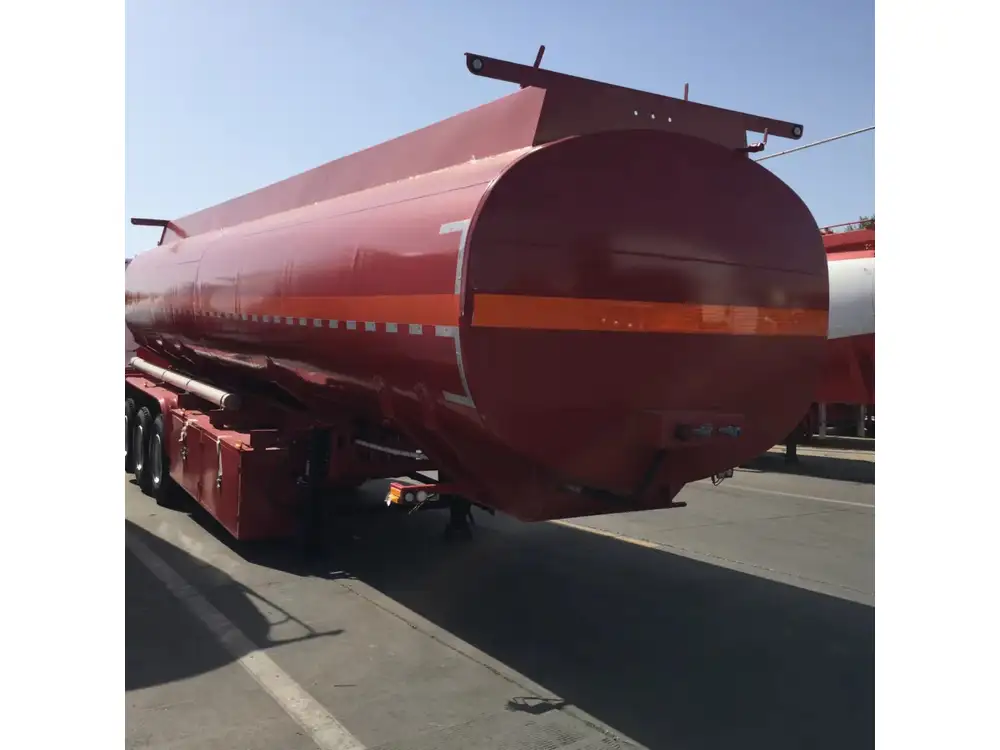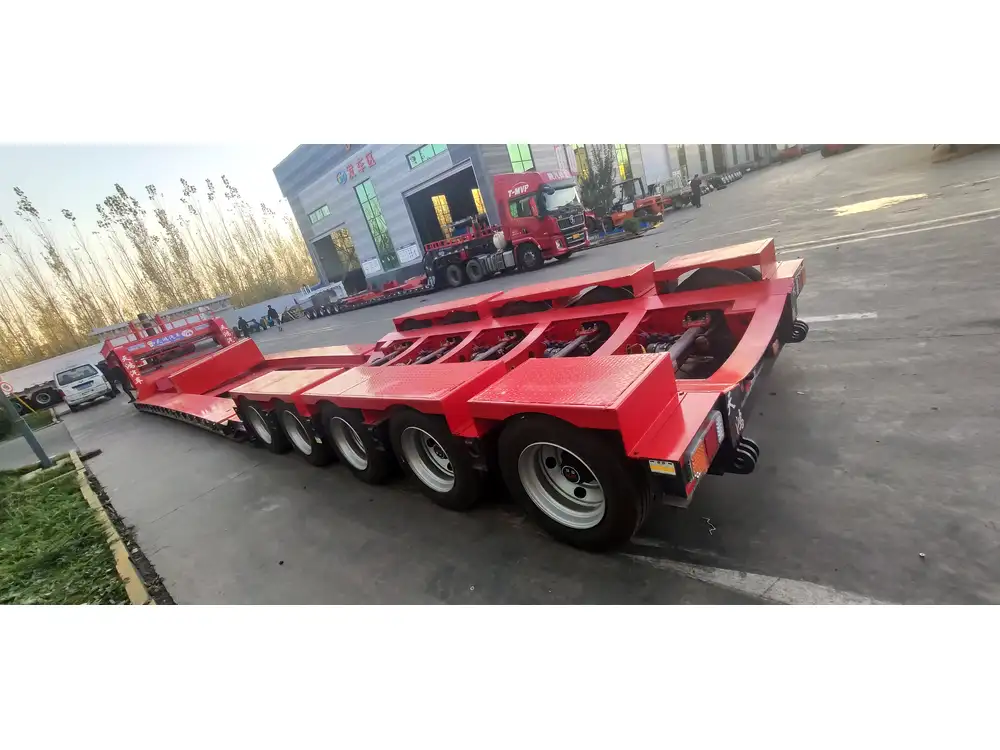Loading and unloading propane semi-trailers require meticulous attention to detail, strict adherence to safety protocols, and adherence to regulations governing hazardous materials. As a leading manufacturer of semi-trailers, we understand the complexities involved in this process. In this comprehensive guide, we will delve into the intricacies of safely loading and unloading propane semi-trailers, offering step-by-step procedures, helpful tips, and best practices to ensure efficiency and safety.
Understanding the Basics of Propane Transportation
What is Propane?
Propane is a flammable hydrocarbon gas, often used as fuel for heating, cooking, and vehicles. When transported in semi-trailers, it is in liquid form, pressurized and contained within specialized tanks to maintain safety during transit.

Regulatory Compliance
Before engaging in the loading and unloading process, it is essential to be familiar with relevant regulations, including:
| Regulatory Body | Regulation | Description |
|---|---|---|
| DOT (Department of Transportation) | 49 CFR Parts 171-180 | Regulations for transporting hazardous materials including propane. |
| OSHA (Occupational Safety and Health Administration) | Standards for flammable liquids | Guidelines for workplace safety in relation to flammable materials. |
| NFPA (National Fire Protection Association) | NFPA 58 | Code for the storage and handling of liquefied petroleum gases. |
Safety Equipment and Preparations
Prior to loading or unloading, ensure that all personnel involved are equipped with appropriate personal protective equipment (PPE):
- Hard Hats: To protect against head injuries.
- Safety Goggles: To shield eyes from splashes and debris.
- Flame-Resistant Clothing: To minimize the risk of burns.
- Gloves: For hand protection when handling equipment.
Step-by-Step Loading Procedures
Loading a propane semi-trailer involves several critical steps designed to ensure efficiency and safety. Here’s a detailed look at the process:

1. Pre-Loading Safety Checks
Ensure a safe environment by performing the following checks:
- Area Inspection: Verify that the loading area is clear of obstacles and flammable materials.
- Equipment Check: Inspect the loading equipment, couplings, hoses, and valves for integrity.
- Weather Assessment: Avoid loading in inclement weather, as rain or snow can create hazardous conditions.
2. Grounding and Bonding
Before commencing the loading process, grounding and bonding the propane tank to prevent static electricity buildup is vital.
- Grounding: Connect a grounding wire from the trailer to a grounding rod in the ground to dissipate static electricity.
- Bonding: Attach a bonding wire between the fill nozzle of the propane tank and the loading equipment.
3. Preparing the Semi-Trailer and Equipment
- Valve Inspection: Check that all valves on the trailer are closed and leak-tested to avoid any spillage.
- Fill Connection Assembly: Connect the fill line to the trailer’s fill connection securely.

4. Loading Process
Execute the following steps:
- Check for Leak Detection: Employ a gas detector to ensure no leaks are visible before commencing the fill.
- Open the Loading Valve: Gradually open the loading valve and monitor the fill process. Make sure to refer to the gauge to monitor fill levels.
- Observe Fill Levels: Watch the fill process closely to prevent overfilling, which could lead to dangerous spillage or venting of propane.
5. Post-Loading Protocols
Once the loading process is complete, follow these procedures:
- Close Valves: Shut off all valves securely to prevent leaks.
- Disconnect Equipment: Carefully remove the loading equipment, ensuring that there are no spills.
- Grounding Disconnection: Remove bonding and grounding cables, taking care to avoid sparks.
- Documentation: Log the details of the load, including the date, quantity loaded, and signatures for compliance records.
Step-by-Step Unloading Procedures
Similar to loading protocols, unloading propane semi-trailers also requires strict adherence to safety practices. Here’s a comprehensive breakdown:

1. Pre-Unloading Safety Checks
- Area Inspection: Ensure the unloading area is free from hazards, personnel are at a safe distance, and no flammable materials are nearby.
- Equipment Check: Inspect hoses and valves for leaks or damage before starting the unloading process.
2. Prepare for Grounding and Bonding
Just as with loading, follow the grounding and bonding procedures to mitigate static electricity risks.
3. Unloading Procedures
Follow these structured steps:
- Confirm Receipt of Propane: Before unloading, ensure specific details regarding the delivery point and acceptance of propane.
- Connect Unloading Equipment: Securely connect the unload hose to the semi-trailer’s unloading valve.
- Open the Unloading Valve: Open the unloading valve carefully, monitoring the process for leaks.
- Adjust Flow Rate: Control the rate of flow to avoid surging through the hoses, which can lead to excess pressure buildup.

4. Monitoring the Unloading Process
Throughout the unloading operation, utilize trained personnel to monitor the process diligently:
- Watch for Leaks: Regularly check connections for gas leaks using soapy water.
- Maintain Communication: Establish clear lines of communication between the truck driver and ground personnel, ensuring safe coordination.
5. Post-Unloading Protocols
When unloading is complete, ensure the following:
- Close All Valves: Secure all unloading valves and connections to prevent leaks.
- Remove Equipment: Carefully disconnect hoses, ensuring no residual product spills occur.
- Document Completion: Maintain accurate records detailing the quantity unloaded and relevant signatures for compliance.
Common Challenges and Solutions in Propane Loading and Unloading

Table of Challenges and Solutions
| Challenge | Potential Solution |
|---|---|
| Leaking Connections | Regularly inspect hoses and fittings; use PTFE tape for tighter seals. |
| Pressure Buildup | Monitor pressure gauges; employ pressure release valves if needed. |
| Spillage During Loading/Unloading | Establish slow-fill processes; use spill containment pads. |
| Training Gaps among Staff | Implement regular training and certification for all personnel involved. |
| Weather-Related Issues | Develop contingency plans for adverse weather conditions. |
Best Practices for Safe Loading and Unloading
Continuous Safety Training: Regular safety drills and updated training sessions ensure that all personnel are equipped to handle propane semi-trailer operations safely.
Emergency Response Plans: Have a clear emergency response plan in place to mitigate risks in case of leaks or accidents. Practice regular drills.
Equipment Maintenance: Regularly maintain all loading and unloading equipment to ensure it meets operational safety standards. This should include routine checks of hoses, valves, tanks, and safety equipment.
Implementing a Buddy System: Use a buddy system, where team members work in pairs during loading and unloading to enhance safety and communication.
Clear Signage and Markings: Ensure that the loading and unloading areas are marked with clear signs indicating the presence of flammable materials and safety protocols.
Conclusion
Successfully loading and unloading propane semi-trailers involves adhering to stringent safety protocols and regulations to minimize risks while maintaining efficiency. By following the outlined procedures, understanding common challenges, and implementing best practices, companies can ensure safe operations while protecting their personnel and the environment. As a manufacturer dedicated to providing safe and effective propane transport solutions, we advocate for a culture of safety and compliance in all loading and unloading practices.
Prioritizing safety not only complies with regulatory requirements but also ensures the smooth operation of propane distribution, ultimately contributing to a more sustainable and responsible business practice. By carefully following these guidelines, we can thrive in our commitment to excellence in the propane transportation industry.



